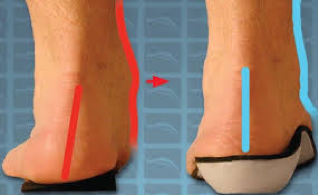What are Flat Feet?
This painful condition refers to pain associated with a flat foot. The Flat foot can be pre-existing or can be a new condition.
Initially, pain is often felt along the inside of the ankle, but as the problem worsens deformity becomes apparent and the foot flattens and turns outwards. Pain may develop on the outside of the ankle and if the deformity continues to worsen over time the joints in the hind foot become affected and can become arthritic.
This condition develops as the ligaments that support the arch fail, changing the mechanics of the foot. As such the tendons and joints become dysfunctional and inflamed. The natural history is that it gradually progresses and worsens.
The tibialis posterior (TP) tendon is one of the major stabilising structures in the foot. It runs behind the bump on the inside of the ankle (the medial malleolus) and inserts into one of the bones of the instep (navicular). The main function of the tendon is to support the arch and keep the foot turned inwards when walking. It keeps the arch supported when we stand on our toes and push off with walking.
Treatment options range from non-operative to operative.

NON-OPERATIVE MANAGEMENT
In the early or mild stages of TP tendon dysfunction, simple painkillers, orthotics, and physiotherapy are used. A custom moulded splint can be made to try and correct the heel deviation and arch when walking.
OPERATIVE MANAGEMENT
Conservative measures often are inadequate and symptoms and severity progress. Surgery aims to alleviate pain, treat the torn tendon and reinforce the arch and alignment of the foot.
